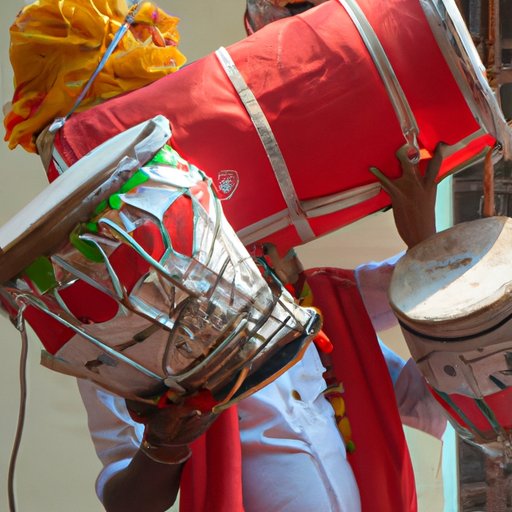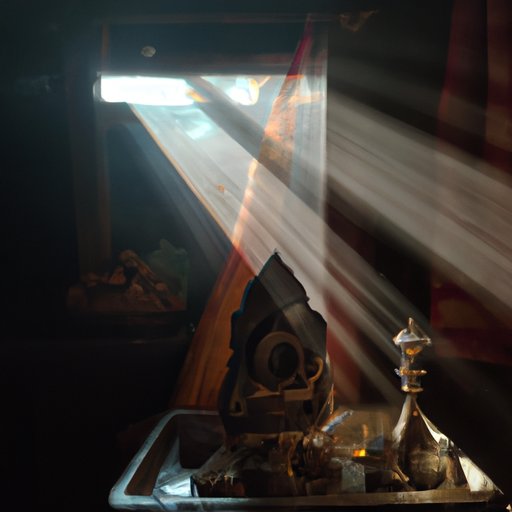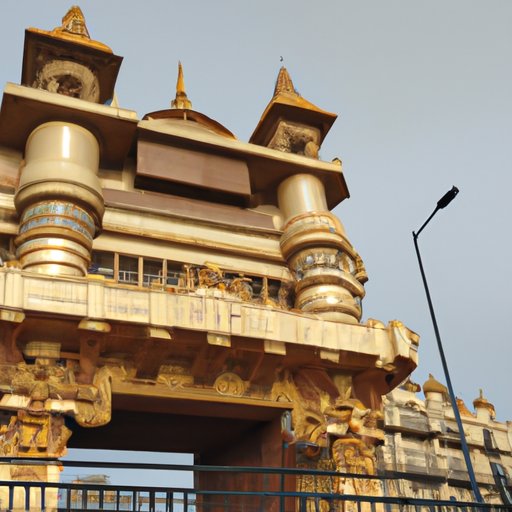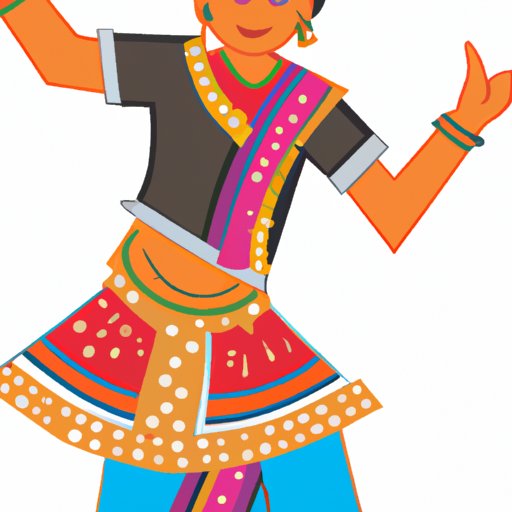Introduction
India is a country steeped in culture, with a long history that dates back thousands of years. The country has a rich and diverse cultural heritage that continues to influence modern India today. This article will explore the different regions of India and their unique cultures, traditional clothing, music and dance, religious beliefs, food, festivals, and celebrations. We’ll also look at how these elements of culture are influencing modern India.
Exploring the Different Regions and their Cultures
India is divided into four main regions: North, South, East, and West. Each region has its own distinct culture, language, traditions, and customs.
North India
The North of India is home to some of the most iconic locations in the country, such as the Taj Mahal and the Himalayas. The culture of this region is heavily influenced by Hinduism and the Mughal Empire. The people of this region have a strong sense of pride in their culture and traditions, which can be seen in the colorful clothing they wear and the vibrant festivals they celebrate.
South India
The South of India has a completely different culture to the North. It is home to some of the oldest Hindu temples in the world and the majority of the population follows Hinduism. The cuisine of this region is particularly spicy and flavorsome, with a variety of delicious dishes to choose from. The clothing in this region is also very distinctive, with bright colors and bold patterns being popular choices.
East India
East India is home to many different tribal groups and has a diverse range of cultures. It is also the birthplace of Buddhism and there are many Buddhist temples and monasteries dotted throughout the region. The clothing of this region is typically made from natural materials such as cotton and silk and is often brightly colored. The cuisine is also quite varied, with many different types of seafood being popular.
West India
West India is home to the bustling cities of Mumbai and Goa and is known for its vibrant nightlife and beautiful beaches. The culture of this region is heavily influenced by Hinduism and there are many temples and shrines dedicated to various gods and goddesses. The cuisine is mostly vegetarian and the clothing is usually brightly colored and heavily embroidered.
Traditional Clothing of India
Clothing in India is traditionally dictated by religion and region. Hindu women typically wear saris or salwar kameez, while Muslim women tend to wear burqas or abayas. Men in both religions typically wear lungis or dhoti-kurta, although Western clothing is becoming increasingly popular.
Women’s Clothing
The traditional clothing for women in India is the sari, which is a long piece of fabric that is draped around the body in various styles. Saris come in a variety of colors and fabrics and are often heavily embroidered. Another popular choice is the salwar kameez, which is a two-piece outfit consisting of loose trousers and a tunic top.
Men’s Clothing
The traditional clothing for men in India is the lungi or dhoti-kurta. A lungi is a long piece of cloth that is wrapped around the waist and legs. A dhoti-kurta is a combination of a dhoti (loose trousers) and a kurta (long shirt). These garments are usually made from cotton and are usually white or off-white in color.

Music and Dance in Indian Culture
Music and dance are an integral part of Indian culture. Every region has its own unique style of music and dance, which is used to express emotions, tell stories, and celebrate special occasions.
Popular Types of Music
Indian music is primarily based on classical music, with instruments such as sitars, tablas, and sarangis being popular choices. Popular genres include Hindustani, Carnatic, and Sufi. Popular instruments include the harmonium, sarod, and the flute.
Popular Types of Dance
Indian dance is highly varied and is often used to express emotion or tell stories. Popular types of dance include Bharatanatyam, Kathak, Odissi, and Kuchipudi. These dances are usually accompanied by traditional music and involve graceful movements and intricate footwork.

The Impact of Religion in Indian Culture
Religion plays an important role in Indian culture and is deeply intertwined with everyday life. The three major religions in India are Hinduism, Islam, and Buddhism.
Hinduism
Hinduism is the most widely practiced religion in India and it has a long and complex history. Hindus believe in the concept of karma, or the idea that one’s actions in this life will determine their fate in the next life. Hindus also practice yoga and meditation, which are believed to help them attain spiritual enlightenment.
Islam
Islam is the second largest religion in India and is mainly practiced in the northern and western states. Muslims believe in one God, Allah, and follow the teachings of the Prophet Muhammad. They observe the five pillars of Islam, which include prayer, fasting, charity, pilgrimage, and belief in Allah.
Buddhism
Buddhism is the third largest religion in India and is primarily practiced in the eastern states. Buddhists follow the teachings of Siddhartha Gautama, who was born in India in the 6th century BCE. Buddhists believe in the Four Noble Truths and practice meditation as a way to achieve enlightenment.
Food, Festivals, and Celebrations in India
Food, festivals, and celebrations are an important part of Indian culture. Food is an important part of social gatherings and many festivals and celebrations involve feasting.
Popular Foods
Indian cuisine is renowned for its flavorful dishes and spices. Popular dishes include curries, biryanis, dals, and naans. Street food is also very popular in India and includes chaat, vada pav, and samosas.
Major Festivals
India is home to many festivals and celebrations that take place throughout the year. Some of the most popular festivals include Diwali, Holi, Dussehra, and Raksha Bandhan. These festivals are celebrated with great enthusiasm and involve feasting, music, and dancing.
Other Celebrations
In addition to the major festivals, there are many other celebrations that take place throughout the year. These include weddings, birthdays, anniversaries, and other special occasions. These celebrations are often marked with feasts and festivities.

How Modern India is Influenced by its Cultural Heritage
Modern India is heavily influenced by its cultural heritage and many aspects of traditional culture still remain. Technology, art, and education are all areas where Indian culture is having a major impact.
Technology
India is at the forefront of technological innovation and is home to some of the world’s leading tech companies. Indian engineers and scientists are responsible for developing some of the most advanced technologies, such as artificial intelligence, robotics, and biotechnology.
Art
Indian art has a long and rich history and is still highly influential today. Traditional art forms such as painting, sculpture, and weaving are still practiced and appreciated, while modern art forms such as photography and video are gaining popularity.
Education
Education is highly valued in India and the country has some of the best universities in the world. Indian students are attracted to the country’s high-quality education system and the opportunity to learn about Indian culture and heritage.
Conclusion
India has a long and fascinating cultural heritage that continues to influence modern India today. From traditional clothing, music, and dance to the impact of religion, food, and festivals on modern India, the country’s culture is incredibly diverse and complex. India’s cultural heritage is evident in its technology, art, and education, and it is clear that this heritage will continue to shape the country for many years to come.
(Note: Is this article not meeting your expectations? Do you have knowledge or insights to share? Unlock new opportunities and expand your reach by joining our authors team. Click Registration to join us and share your expertise with our readers.)
